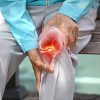OVERUSE INJURIES – IDENTIFYING GOOD PAIN FROM BAD PAIN

Thinking of starting a new physical activity program or ramping up your current training routine? If so, you may be at risk of an overuse injury — which could ultimately prevent you from being active.
Let us find out what can cause an overuse injury and how to safely increase your activity level.
Did you know that most sports injuries can be boiled down into three main categories?
Acute, Overuse and Chronic.
ACUTE – Usually a result of a single traumatic event within the last five days. Examples: fractures, sprains, dislocations, muscle strains, ligament rupture and tears.
OVERUSE – Subtle and they occur over time, making them challenging to diagnose and treat. Examples: patellar tendinitis swimmer’s shoulder, runner/jumpers knee, Achilles tendonitis, shin splints.
CHRONIC Usually they last at least three months or more than 3 months. These include sprains, strains , partial tears, contusions or bruises which have been previously ignored and are now bothering.
COMMON CAUSES OF OVERUSE INJURIES:
1) Technique errors
2) Training errors
3) Pre existing bio mechanical or anatomical problems
AVOIDING OVERUSE INJURIES
1) Always include an adequate warm-up and cool-down period in your exercise routine. This will ensure that your body is prepared to exercise and prevent undue strain to muscles, tendons, and ligaments.
2) Be mindful of your form and gear – Consider having a trainer analyze your technique, and remember that your shoes wear out and should be replaced every 300 miles or a few times per year.
3) Pay Attention to Mechanics -Improper technique is also a major factor in tendonitis types of injuries, especially in endurance sports that feature highly repetitive motions. If a cyclist has a poor bike fit and they ride for 1-hour at 85-rpm, they are pedaling 5,100 revolutions with a cycling position that’s potentially aggravating tendons in the ankle, knee, or hip! If you’re attentive and address the problem quickly, you can often prevent it from becoming an overuse injury.
4) Allow adequate recovery- Spreadout your workouts over the course of the week. Don’t try to squeeze it all in on the weekends.
5) Identify Good Pain Versus Bad Pain – Good pain is a result of overload from a training program that features progression. If you’re adapting well to the training, soreness or pain will be absent the next day and you’ll have the energy for a high-quality workout. Pain that remains present and relatively constant throughout a workout, (even if it lessens a bit after a good warmup) is an indication that you’re pushing beyond your body’s ability to recover.
6) Don’t ramp up your training too quickly -10 % rule – A good guideline to follow is the 10 percent rule – don’t increase your mileage by more than 10 percent per week to ensure that your body is able to adapt and has adequate recovery time.
7) Include variety in your routine- Performing a mix of running, swimming, biking, strength training, and other types of exercise allows your body to use different muscle groups and prevents overuse of one particular area.
What to Do if You Get an Overuse Injury
If you’re an endurance athlete with training or competition goals that are important to you or simply you have engaged in hobby sports or even your regular gym workouts, it is important to visit your doctor. If you’re experiencing symptoms of an overuse injury, there may be treatments and specific exercises you can do to accelerate your recovery. Self or Internet guided treatment may do more harm and we are seeing many of such patients in our practice.
Only accurate diagnosis and treatment will make you ready to get back to training. A certified coach or biomechanics expert may assess your cycling position, running form and/or swimming technique or gym training to ensure you are incorporating appropriate techniques.
A very important step upon returning to active training is to make sure you are reconditioning your body to operate with proper biomechanics. This may mean taking a step back in the intensity of your training so you can focus on technique for a while, and then begin increasing training load by a conservative 5-8% per week for the first 2-3 weeks back to training.





Leave a Reply